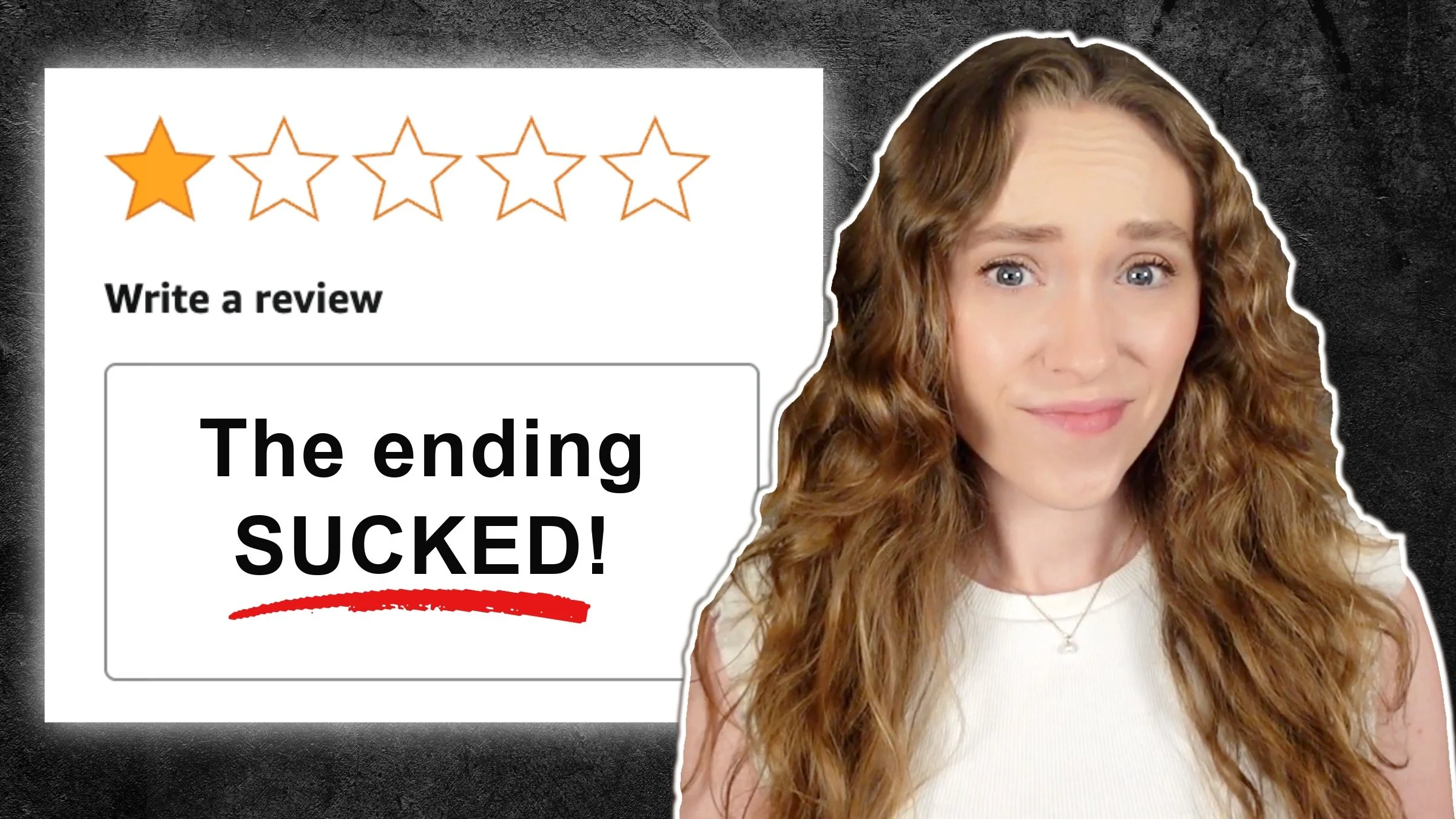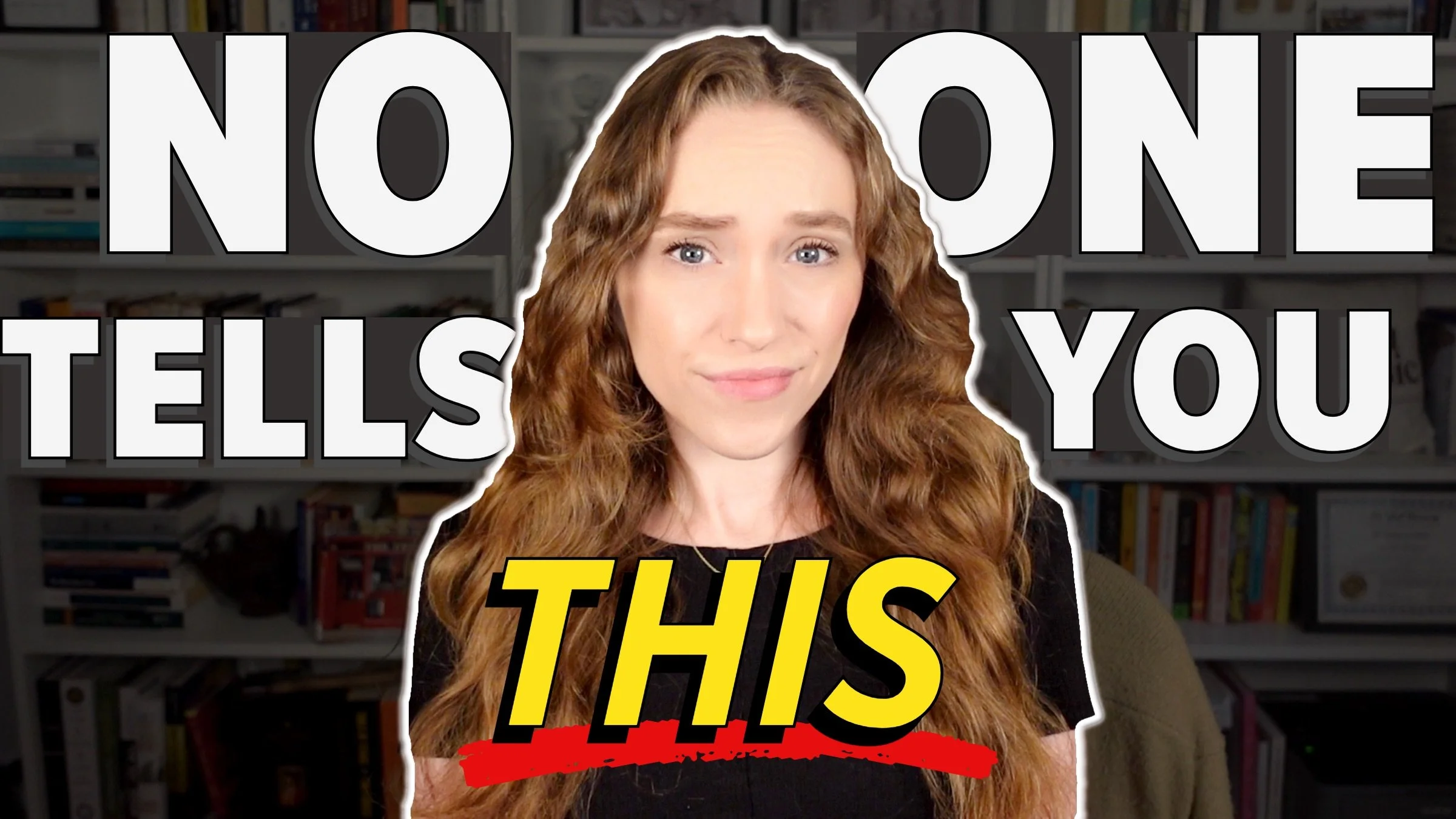“Show, Don’t Tell”: What This Misunderstood Writing Advice ACTUALLY Means
HIT PLAY OR READ THE POST BELOW:
There's one piece of writing advice that most new authors get totally wrong. I guarantee that you've heard it before, but do you actually know what it means? Do you know when to apply it and when to disregard it?
Okay, what is the most misunderstood piece of writing advice out there? It's "show, don't tell." You may think you know what this means already, but let's truly break it down because showing is not always better than telling. This is something I coach many of my editing clients on because understanding how to implement this advice the right way is essential to strengthening your skills as a storyteller.
What Does “Show, Don’t Tell” Mean, Really?
So, let's demystify what "show, don't tell" really means. Boiled down, this tip is meant to encourage writers to use sensory detail and action to convey elements of the story rather than using straightforward or plain descriptions.
The concept is often attributed to Russian playwright Anton Chekhov, who famously said, "Don't tell me the moon is shining; show me the glint of light on broken glass." The idea is that showing allows us to be immersed in the character's environment and experience and infer things for ourselves rather than the narrator or the writer telling us things more explicitly and directly, which is often less engaging and doesn't place us in the character's head and body directly.
For example, if we're told that a character is angry, we're likely not going to have as much of an emotional response or connection to that as we would if you showed us what those feelings of anger felt like and entailed materially.
While "show, don't tell" as a general rule is helpful and valid, it is often misunderstood, and it's been so drilled into writers' heads that it's often misapplied or taken too far to the extreme. Ultimately, it doesn't mean that you can never “tell” the reader something. In fact, some amount of telling is necessary for a compelling narrative. Without some amount of telling, you run the risk of the narrative being bogged down by too many details that ultimately don't contribute much to the story. “Showing” should be about including meaningful details that advance the plot and enhance the reader's experience of the story — not just any detail for the sake of it.
Writers also often fail to recognize when telling the reader something could actually be more effective than showing it, which limits the style of their prose and the scope of what they include in the story.
When to “Show, Don’t Tell”
Let's talk about the instances when it is more effective to show rather than tell. In general, showing helps you immerse the reader in the POV character's experience. Whether you are writing in first person or close third person or a rotating close third person narration, it places us right in the character's mind and body rather than you describing it as a narrator from a distance.
1. Emotional and Consequential Moments
It's especially important to show characters' emotional reactions and responses to consequential moments in the story. This helps the reader feel the impact of these emotionally charged scenes.
Let's look at a basic example:
"John was scared."
That is a straightforward way of telling us how John feels, but showing is more effective here:
"John's hands trembled as he glanced over his shoulder."
We feel that emotion with John much more potently in the revision.
To prioritize showing over telling, watch for filter words like “saw,” “heard,” “smelled,” etc. Many times, you can simply describe what is going on, and the reader will already infer that we are experiencing it from the POV character's perspective.
For instance, let's take this line:
"She heard the train coming over the tracks."
Instead, you could say:
"The room shook as the low rumble of the train grew nearer, its steam engine hissing as it passed."
Because we're already in that character's POV, we understand that she is hearing it.
2. Important Character Traits
Another place where showing works much better than telling is to reveal the personalities and prominent traits of your characters. Rather than telling us what they're like, show us what they're like through their dialogue and their actions. Here's an example:
"Meredith was clever and ambitious."
That's fine, but we don't really know what to latch on to, and we can't visualize how her cleverness and ambition really manifest. Try something like this instead:
"Meredith set up her lemonade stand right outside the baseball stadium, knowing it'd get more foot traffic than on her quiet block."
Here, via the action that we're seeing Meredith take, we understand that she is both clever and ambitious.
When to “Tell” Instead of “Show”
Now that we know when showing is more effective, let's talk about when telling is more effective.
1. Transitions
Telling can be helpful in transitions. If you need to discuss a certain passage of time or you want to summarize some events that happened off stage that aren't really important to the main plot, telling is perfectly fine.
For example, if the main action of a scene occurs when your character returns home from work, you don't need to show them at the office, eating their lunch, then commuting home. You can begin that scene right at the main plot action, just summarizing what happened earlier in that day.
2. Backstory
Another instance where telling works well is on certain background details or backstory that you don't necessarily need to show us.
For instance, if we need to know the context of a relationship, such as that two characters have been best friends since high school, we don't necessarily need a full flashback scene to the time that they met and how they became friends. That would probably take up a whole novel in and of itself. You can simply tell us that they have been best friends since high school, maybe give us a few anecdotes or details about how they became close, and that will be perfectly fine.
Of course, I'm not saying don't include any flashbacks. Flashbacks can be an amazing technique to deepen your characterizations, but make sure they are relevant and contributing to the plot. Not every single piece of backstory has to be a flashback.
3. Character Interiority
Sometimes you may also want to use a little bit of telling to incorporate character interiority. This is when you give the reader a glimpse into what's going on in the POV character's mind, and it is so important to effective fiction.
There's often confusion about showing vs. telling relative to character interiority, and the truth is that you can incorporate character interiority with showing and telling, and both can be effective. If you find yourself telling us what a POV character is thinking here or there, it's not necessarily a bad thing. In fact, you can strategically use moments of telling to enhance the flow of the story and grant us more access to that character's mind.
Here's an example where you might use telling to incorporate some character interiority:
"Are you still planning to come to Naples this weekend?" Jill asked as she folded a sundress.
"Oh, yeah, definitely." Paula's voice cracked. She'd spent the past two weeks hoping Jill would change her mind about the trip.
That last line is technically telling because we're being told that Paula wishes Jill would change her mind about the trip, but it may be harder to convey this precise thought this succinctly via showing the reader. So, in this case, a little bit of telling goes a long way and gives us a lot of context for the relational dynamics in the scene.
How to Balance “Show, Don’t Tell” in Your Writing
Now that we know both showing and telling are essential to strong fiction writing, let's talk about how to balance the two.
If you've gotten feedback that your writing isn't engaging enough or that an emotional moment isn't resonating with readers as strongly as it needs to, or that it's difficult to visualize what's going on in the story in the reader's mind, those could be signs that you could use more showing rather than telling in the narrative. You likely need to work to place the reader more directly in the characters' experiences.
On the flip side, if you get feedback that your scenes are a bit clunky and overloaded, or the narrative spends too much time on inconsequential moments, or you get feedback that your character interiority is lacking and we don't fully understand why the characters do what they do, then you may want to incorporate a few more beats of telling, both to skim through the parts of the narrative we don't actually need to be shown and to grant us more access to what's going on in the character's mind.
I hope this helped clarify how to actually use “show, don’t tell” in your writing. By understanding these principles and applying them thoughtfully in your work, you can make your story so much stronger.
Thanks so much for reading, and happy writing!






